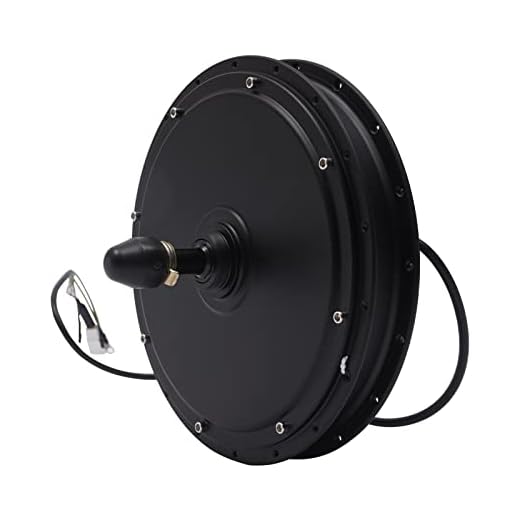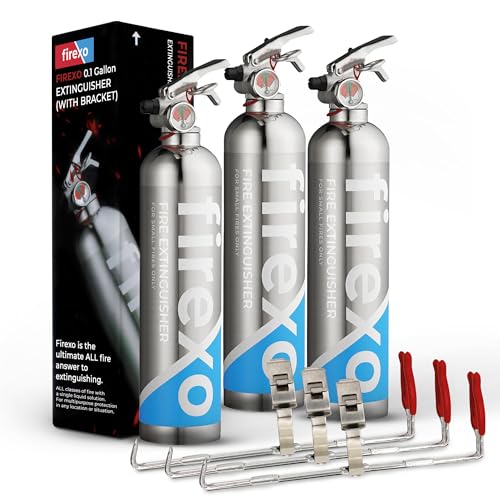
Dropouts on a fork are an essential component of a bike that many people may not be familiar with. These small metal tabs, located at the ends of the fork legs, play a crucial role in securing the wheels to the frame of the bicycle.
Dropouts are designed to hold the wheel axle securely in place, preventing it from slipping out of the frame while riding. They are typically made from durable materials such as steel or aluminum and are often reinforced to handle the stress and strain placed on them during intense riding conditions.
There are two main types of dropouts commonly found on bike forks: horizontal dropouts and vertical dropouts. Horizontal dropouts are the traditional style and feature slots that allow for easy wheel removal and adjustment. They are commonly used on mountain bikes and single-speed bicycles.
Vertical dropouts, on the other hand, are found on most modern road bikes and some mountain bikes. They are named for their vertical orientation and lack the slots found on horizontal dropouts. Instead, the wheel axle is inserted vertically into the dropout and secured with a quick release skewer or through axle.
Whether you are a casual cyclist or a seasoned professional, having a clear understanding of dropouts on a fork is essential for maintaining the safety and functionality of your bike. So next time you ride, take a moment to appreciate these small yet crucial components that help keep your wheels firmly attached to your frame.
What are Dropouts on a Fork on a Bike
Dropouts on a fork are an important component of a bike’s front end. They are the slots or holes located at the bottom of the fork blades, where the wheel axle is attached. These small but crucial features play a vital role in both the functionality and safety of the bicycle.
Dropouts are usually made from metal, such as steel or aluminum, to provide strength and durability. They come in various designs, including horizontal and vertical dropouts, depending on the type of bike and its intended use.
Horizontal dropouts are commonly found on road bikes, commuter bikes, and some mountain bikes. They allow for easy wheel removal and installation by sliding the axle horizontally into the dropout slots. This design also allows for precise chain tension adjustment, making them ideal for single-speed or internally geared hubs.
Vertical dropouts, on the other hand, are typically found on mountain bikes and some hybrid bikes. They feature a slot that accommodates the axle in a vertical orientation. This design makes it easier to secure the wheel in place and align the chain properly. It also provides more stability and prevents the wheel from slipping forward during intense off-road rides.
Dropouts are an essential part of frame geometry and play a significant role in determining the overall handling and performance of a bike. Proper alignment and adjustment of the dropouts are crucial for ensuring the bike’s stability, efficient power transfer, and smooth shifting.
To summarize, dropouts on a bike’s fork are the slots or holes where the wheel axle is securely attached. They come in different designs (horizontal or vertical) and are made from durable metal materials. These small but important features contribute to the bike’s functionality, ease of use, and overall safety.
Main Purpose of Dropouts
Dropouts are an integral part of a bike fork. They are the slots or openings at the ends of the fork legs where the wheel axles are inserted and secured. The main purpose of dropouts is to hold the wheel firmly in place while allowing for easy installation and removal.
Wheel Attachment
Dropouts provide a secure attachment point for the wheel, allowing it to be fixed firmly in place. The wheel axles fit into the dropouts, and typically feature quick-release mechanisms or bolts to secure them in place. This ensures that the wheel stays in position during riding, preventing any wobbling or movement that could affect the bike’s stability and performance.
Wheel Alignment
Dropouts also play a crucial role in aligning the wheel properly within the bike frame. By ensuring that the wheel is correctly positioned, dropouts help maintain proper bicycle handling and stability. This is especially important for bikes with disc brakes, as the brake rotor needs to align precisely with the caliper for optimal braking performance.
Wheel Changes and Maintenance
The use of dropouts makes it easier to remove and install the wheel without disassembling the entire fork. This is particularly convenient for quick wheel changes during tire repairs or tube replacements. The dropouts allow the wheel to be quickly released or tightened, minimizing downtime and hassle.
Adjustability
Some dropouts offer adjustable features that allow for fine-tuning and customization. These adjustable dropouts enable riders to optimize the wheelbase length, adjust the chain tension, or accommodate different wheel sizes. By providing this flexibility, dropouts cater to specific riding preferences and conditions.

In conclusion, dropouts are essential components of bike forks that secure the wheel in place, align it correctly, and facilitate easy wheel changes. The main purpose of dropouts is to ensure stability, enable maintenance, and provide customization options for improved bike performance.
Types of Dropouts
Dropouts are the slots or holes on the rear (and sometimes front) fork of a bike that hold the axle of the wheel in place. They come in different designs to accommodate various bicycle types and axle configurations. Here are some common types of dropouts:
1. Horizontal Dropouts
Horizontal dropouts are the most traditional and widely used type of dropouts. They consist of long slots that run horizontally across the fork and allow for easy adjustment of the wheel position. This type of dropout is commonly found on road bikes, touring bikes, and single-speed or fixed-gear bicycles.
2. Vertical Dropouts
Vertical dropouts are slots that run vertically from the top of the dropout down towards the axle. They are commonly used on mountain bikes and provide a more secure wheel attachment, as the wheel is less likely to slip out of place. Vertical dropouts also make it easier to remove and install the rear wheel.
3. Semi-Vertical Dropouts
Semi-vertical dropouts are a hybrid between horizontal and vertical dropouts. They have a slightly angled orientation, providing a compromise between ease of use and wheel security. Semi-vertical dropouts are commonly found on cyclocross and gravel bikes, as they allow for quick wheel changes during races while also ensuring good wheel retention.
4. Sliding Dropouts
Sliding dropouts are a more advanced type of dropout that allows for easy adjustment of the wheelbase and chain tension. They consist of slots that run diagonally across the dropout, allowing the whole axle assembly to be moved forward or backward. Sliding dropouts are commonly found on mountain bikes, particularly those designed for singlespeed or geared hub drivetrains.
It’s important to note that the specific dropout type used on a bike depends on the frame design and intended purpose of the bicycle. Choosing the right dropout type ensures proper wheel alignment, secure attachment, and ease of maintenance and adjustment.
Materials Used for Dropouts
Dropouts, which are an integral part of a bike fork, serve as the connection point between the fork legs and the wheel axle. They are typically positioned at the bottom of each fork leg and play a crucial role in the stability and functionality of the bike.
Steel
Steel is a common material used for dropouts due to its strength, durability, and affordability. It provides excellent structural integrity, making it ideal for heavy-duty applications. Steel dropouts are relatively easy to manufacture and can withstand high levels of stress and impact without deformation.
Aluminum
Aluminum dropouts are a popular choice for lightweight and high-performance bikes. Aluminum alloys offer a good combination of strength and low weight, making them ideal for riders who prioritize speed and agility. However, aluminum dropouts may not be as durable as steel ones and may be more susceptible to damage from impacts.
Carbon Fiber
Carbon fiber is a lightweight and strong material that has gained popularity in the bicycle industry. It offers excellent stiffness and fatigue resistance, making it a suitable choice for high-end bikes. Carbon fiber dropouts provide weight savings and improved vibration damping properties, contributing to a smoother ride experience. However, they can be more expensive compared to steel or aluminum options.
When selecting a bike with dropouts, it is essential to consider the type of riding you will be doing, your budget, and your preferences for weight, strength, and durability. Each material has its advantages and disadvantages, so finding the right balance is crucial for a satisfactory cycling experience.
Importance of Dropouts in Bike Design
Dropouts are a crucial component in the design of a bike. These small but vital parts, located at the end of the fork, play a significant role in the functionality and overall performance of the bicycle. Dropouts are designed to securely hold the wheel in place and facilitate easy installation and removal.
Wheel Alignment
One of the primary functions of dropouts is to accurately align the bicycle wheel. By providing a solid connection between the frame and the wheel axle, dropouts ensure that the wheel is correctly positioned within the frame. Proper wheel alignment is essential for optimal handling, maneuverability, and stability while riding.
Dropouts that are improperly aligned can lead to difficulties in steering, decreased control, and a compromised riding experience. When a wheel is not aligned correctly, it can result in inconsistent and unpredictable handling, affecting the rider’s safety and comfort.
Wheel Changes and Maintenance
In addition to wheel alignment, dropouts also play a vital role in facilitating wheel changes and maintenance. By providing a secure and easily accessible connection point for the wheel axle, dropouts allow for quick and efficient removal and installation of the wheel.
This feature is particularly important for cyclists who frequently change tires or need to perform regular maintenance on their bicycles. Ease of wheel changes and maintenance saves valuable time and effort, making it more convenient for riders to keep their bikes in optimal condition.
Moreover, properly designed dropouts ensure that the wheel remains securely in place during riding, even when subjected to various loads and forces. This stability is crucial for maintaining a smooth and safe riding experience.
Overall, dropouts are a critical component in the design of a bike. They not only ensure proper wheel alignment but also facilitate easy wheel changes and maintenance. By choosing high-quality dropouts and ensuring proper installation, cyclists can significantly enhance the performance and functionality of their bicycles.









